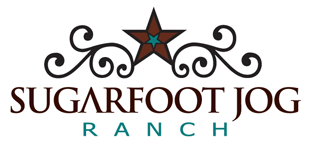PROFESSIONAL DEVELOPMENT FOR BUSINESS SUCCESS
Sugarfoot Jog Ranch offers a number of programs where individuals and teams can leverage the power of horses and their unique ability to reflect human thought and behaviors to achieve the desired results. We specialize in helping people improve their skills in the areas of:
- Verbal/Nonverbal Communication
- Confidence Building
- Prioritization
- Team On-Boarding
- Decision Making
- Cultural Sensitivity
- Performance Standards
- Conflict Resolution
- Problem Solving
- Creativity
- Innovation/Change
- Leadership/Followership
- Healthy Relationship Building
- Accepting Personal Responsibility
OVERVIEW
Sugarfoot Jog Ranch offers an innovative approach to individual, team and organizational learning. By partnering with horses, we create a relaxed, authentic and fun environment where change can happen. We are grounded in proven experiential learning techniques widely recognized as the optimal learning method for adults. Sugarfoot Jog Ranch is affiliated with Equine Experiential Education Association (E3A), a pioneer in horse-led learning.
MISSION
Using goal based activities, we help clients target beliefs, habits and behavior responses. Using this process, clients discover unlimited possibilities to transform performance and impact the bottom line.
EXPERIENTIAL EDUCATION WITH HORSES
Equine Experiential Education is where humans interact with horses to accomplish a goal. The goal-based activities are specifically designed to help both teams and individuals identify their strengths and weaknesses. A facilitator then guides the group's discussion to create an action plan to improve performance. Corporate programs are typically used to improve teamwork, communication and leadership skills and overall performance. Experiential education touches both ends of the active/reflective continuum through physical interaction with horses followed by reflection during facilitated debriefs. All the senses and learning styles are engaged which makes the learning much more likely "to stick". Working outside with horses brings the learning to life in a way that classroom learning can't.
OUR PROCESS
ASSESS: Identify Needs
Select Tools
EXPERIENCE: Activities With Horses
Facilitated Discussion
ACT: Implement Change
Assess Progress
WHY HORSES?
There are numerous parallels between a horse herd's behavior and the dynamics within a corporate environment
- Defined hierarchy and roles often based on seniority or knowledge-all focused on a common goal....survival!
- Require highly developed inter-dependencies to achieve results.
- Possess social nature while maintaining individuality. Generally act in a trusting and cooperative manner. Form lasting relationships and pair bonds.
- Requires leadership. To successfully build a partnership with a horse, a leader must gain the horse's trust, as well as treat the horse with respect and integrity. These are the same behaviors that build employee engagement and loyalty within the corporate environment.
Horses provide immediate, unfiltered feedback to participants
- How humans behave with the horses is how they interact with others.
- Horses respond authentically to this behavior, which provides unfiltered feedback to humans about the impact their behavior has on others.
- Horses are unparalleled at spotting incongruent behavior.
Participating in this process promotes new and authentic dialogue
- Working outside with horses takes participants out of their comfort zone. There is nowhere to hide. The experience itself promotes breakthroughs and authentic communication.
Benefits Your Organization
- Increases self-awareness
- Provides an environment to deal with a difficult issue in a non-threatening way---the issue is transferred to the horse vs. the co-workers. The participant can then apply the learning to the work environment thus removing personalization.
- Transforms workplace performance
- It's FUN!
CASE STUDY-COLLABORATIVE COMPETITION
PROBLEM STATEMENT:
Top veterinarian students from around the world are selected as interns at this prestigious equine veterinarian facility in Lexington, Ky. The students have achieved their current level of success through their high academic ranking and competitive nature. However, their strengths had become an obstacle to their ability to work together as a team. As a result, there was an atmosphere of mistrust, which impacted interpersonal communication among the interns.
PROGRAM DESIGN:
The interns' strengths and areas for development were assessed using Strength Finders and The Five Dysfunctions of a Team. An expert in using equine experiential education within the medical community was consulted. This resulted in the development of a two-day workshop designed to:
- Improve teamwork and collaboration
- Develop better bedside manner
- Increase trust and a sense of community
- Improve flexibility and adaptability
- Increase cultural awareness
OUTCOME:
The interns' ability to work together as a team progressed throughout the program. By the end, they were cheering each other on. They acknowledged that they had a lot in common and that what had worked in the past would not work going forward, A five-point action plan was created to address each objective above.
TEAM BUILDING TESTIMONIALS
"I became aware of self-imposed limitations and realized that I have been missing available resources by not thinking outside the box." Senior Case Manager
"This program is a great way to express concerns and challenges in a healthy way that promises change and isn't threatening." Executive Staff Member
"Team building with input from horses who don't, won't and can't B.S." Board Member
"I was able to see the strengths of my team in action and had a lot of fun. I realize I can get past making assumptions about my leaders and adapt to where they want to go." Operations Manager
"Problems don't look so big. It was exciting to see the team come together in such a short time. We became a united front in terms of what we need to do as an organization." Executive Director
